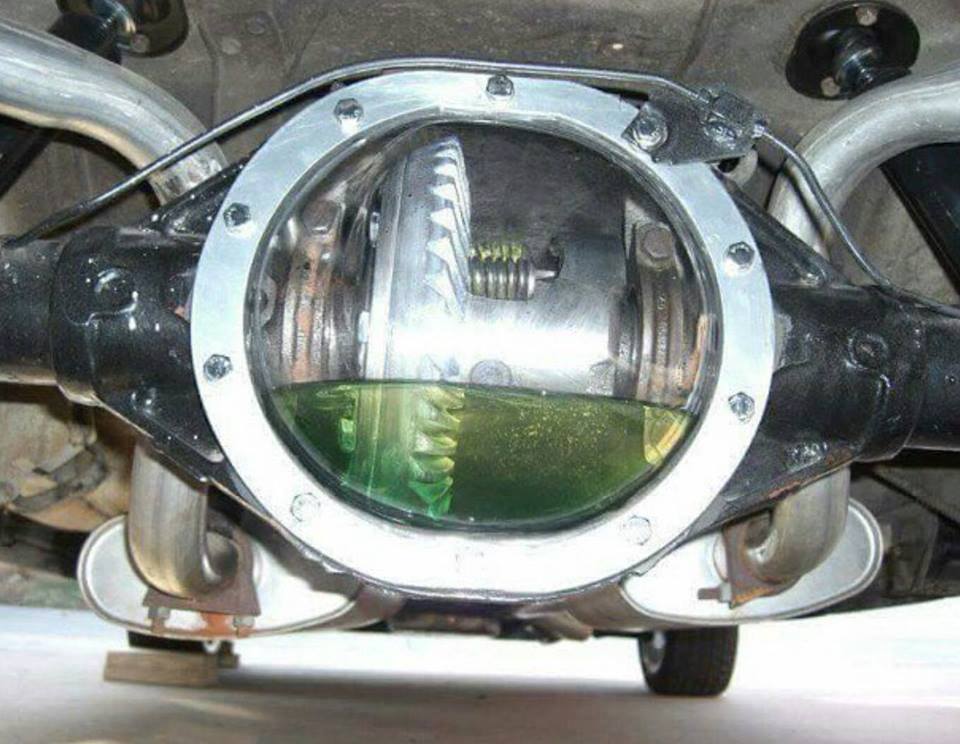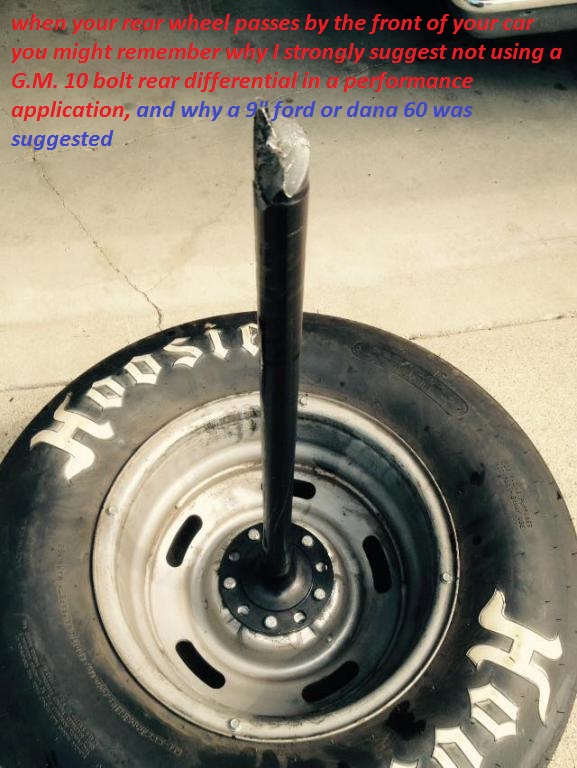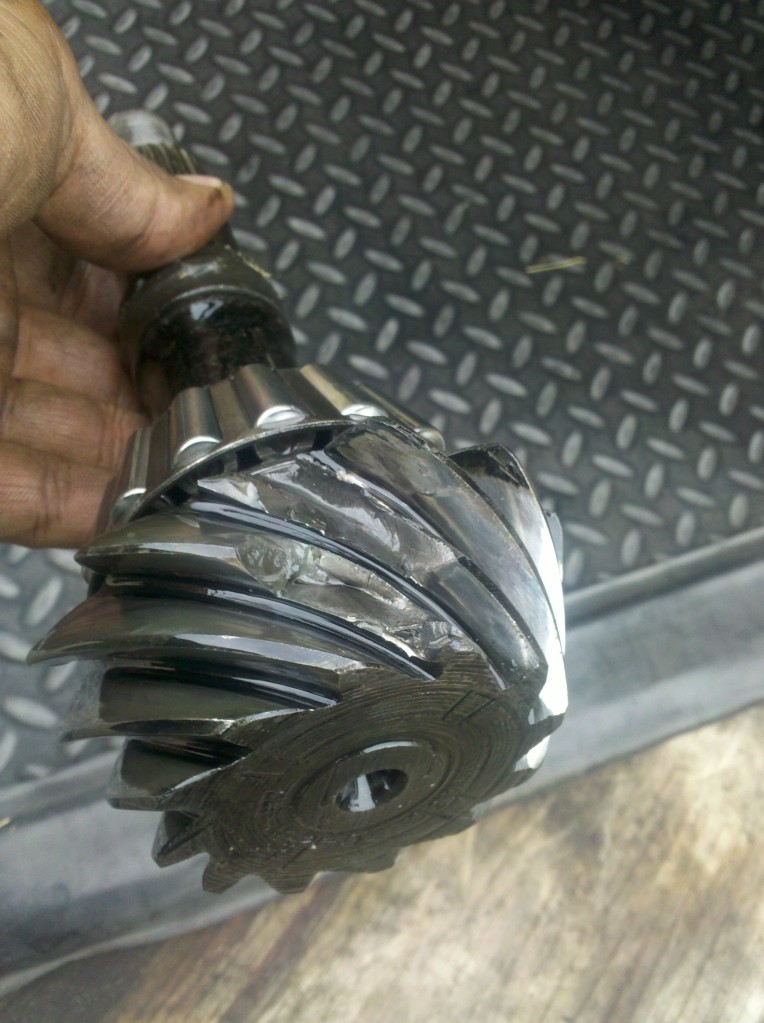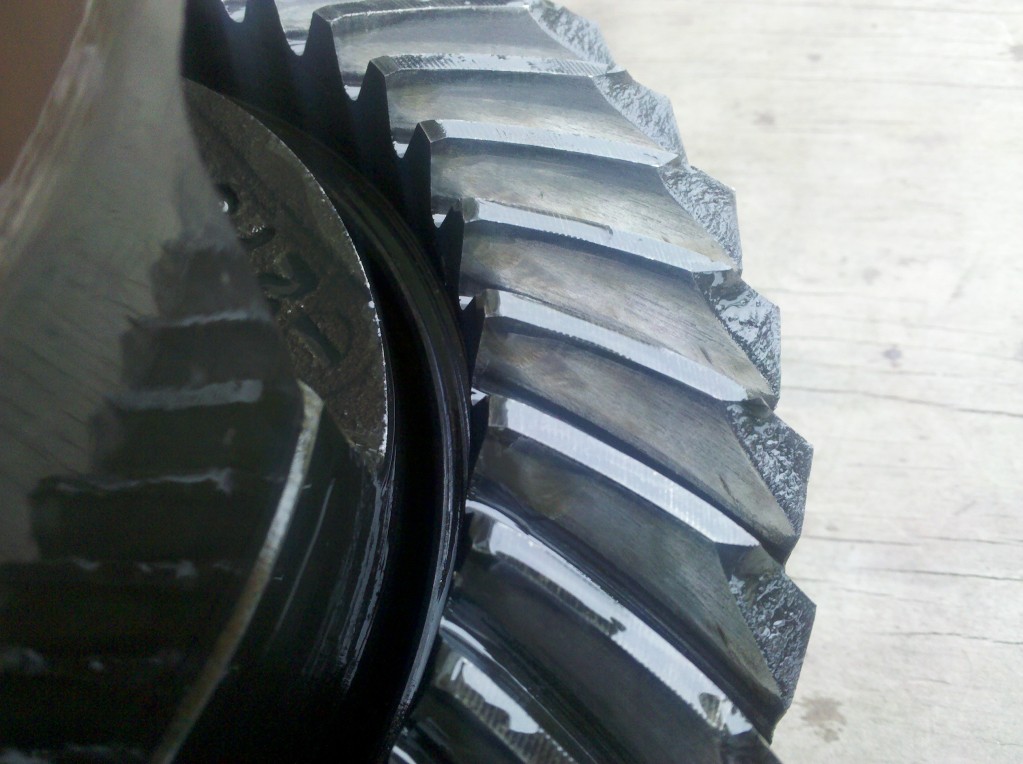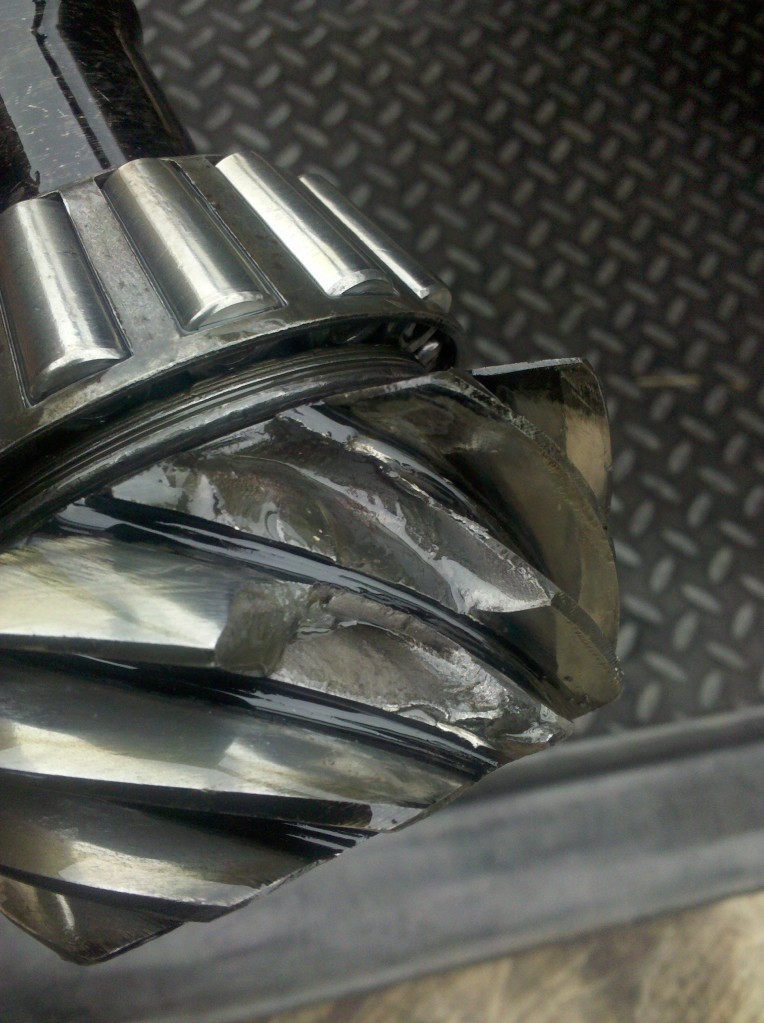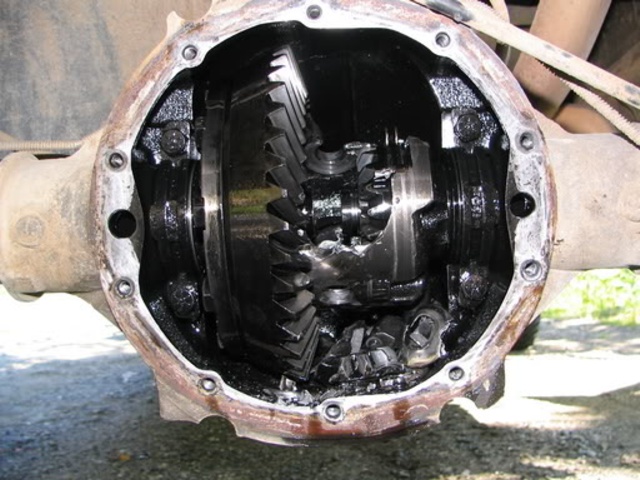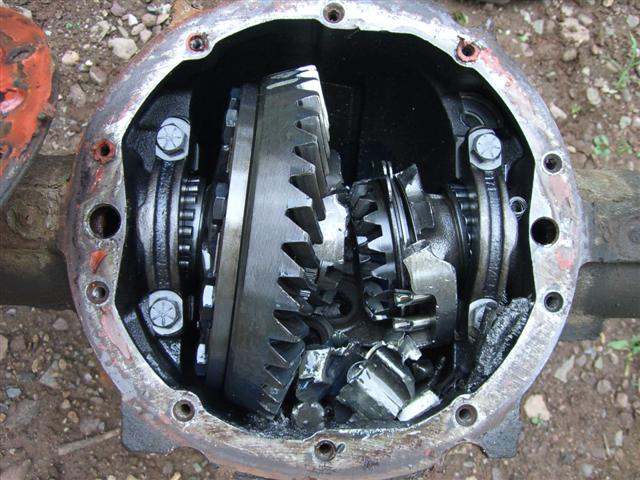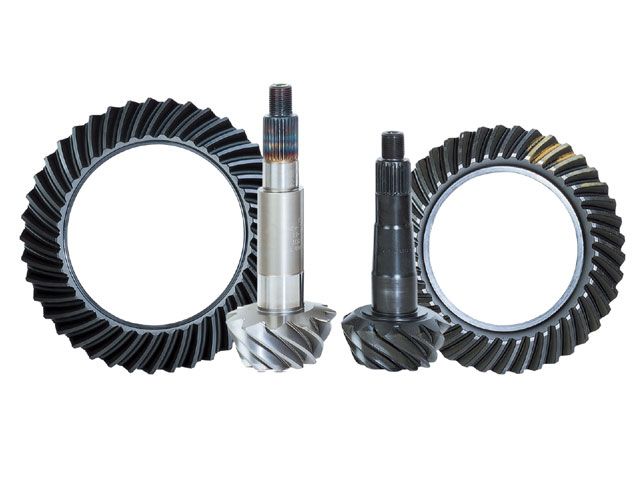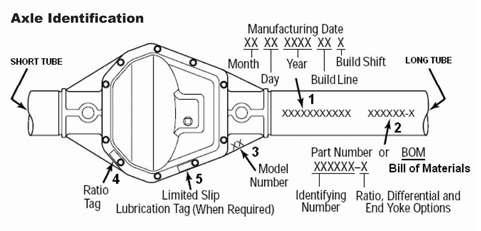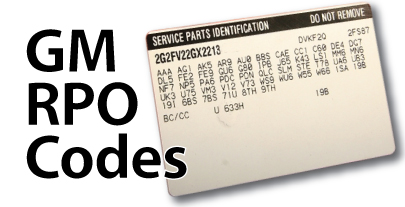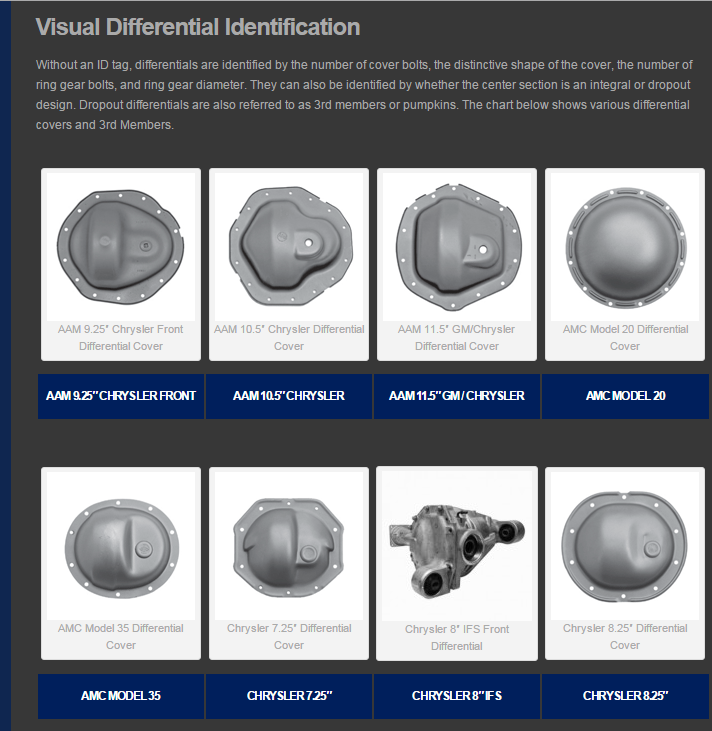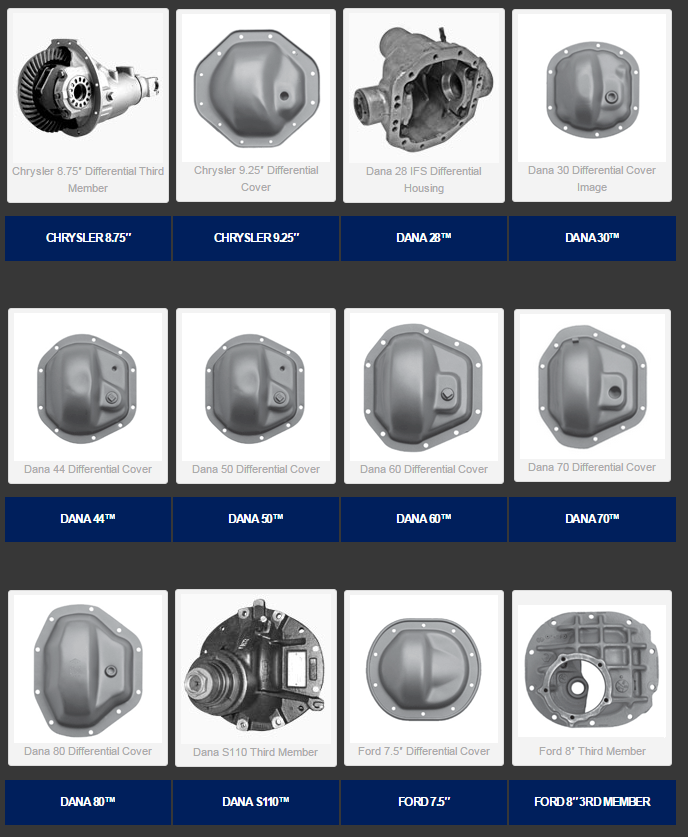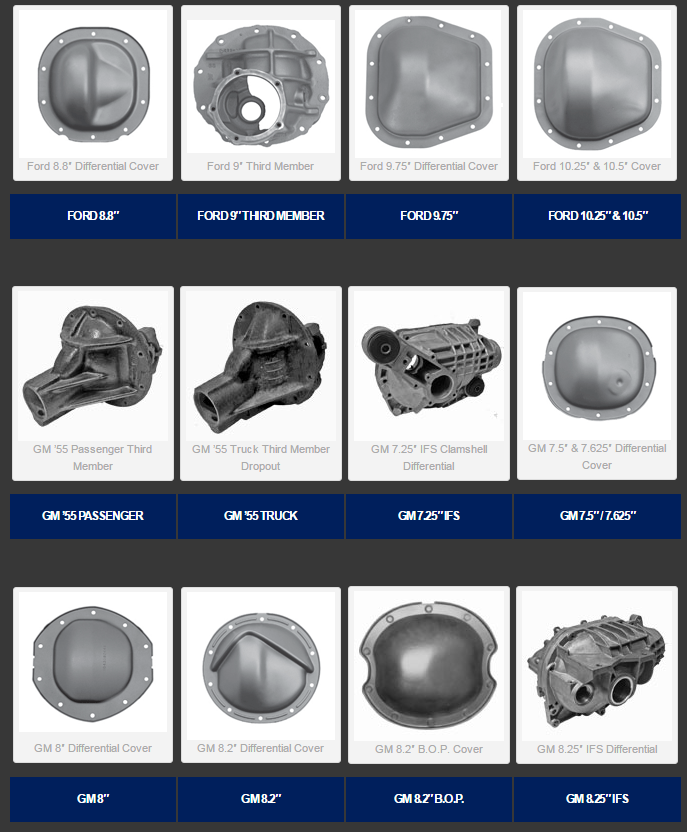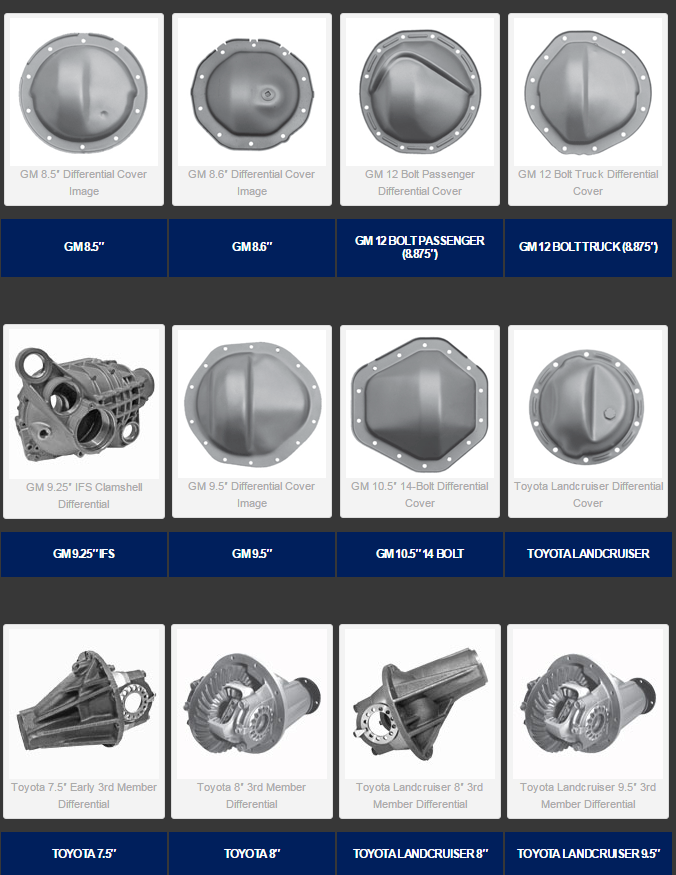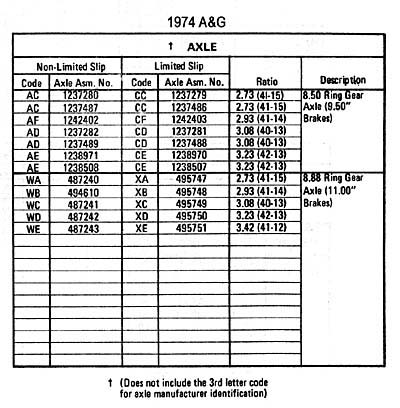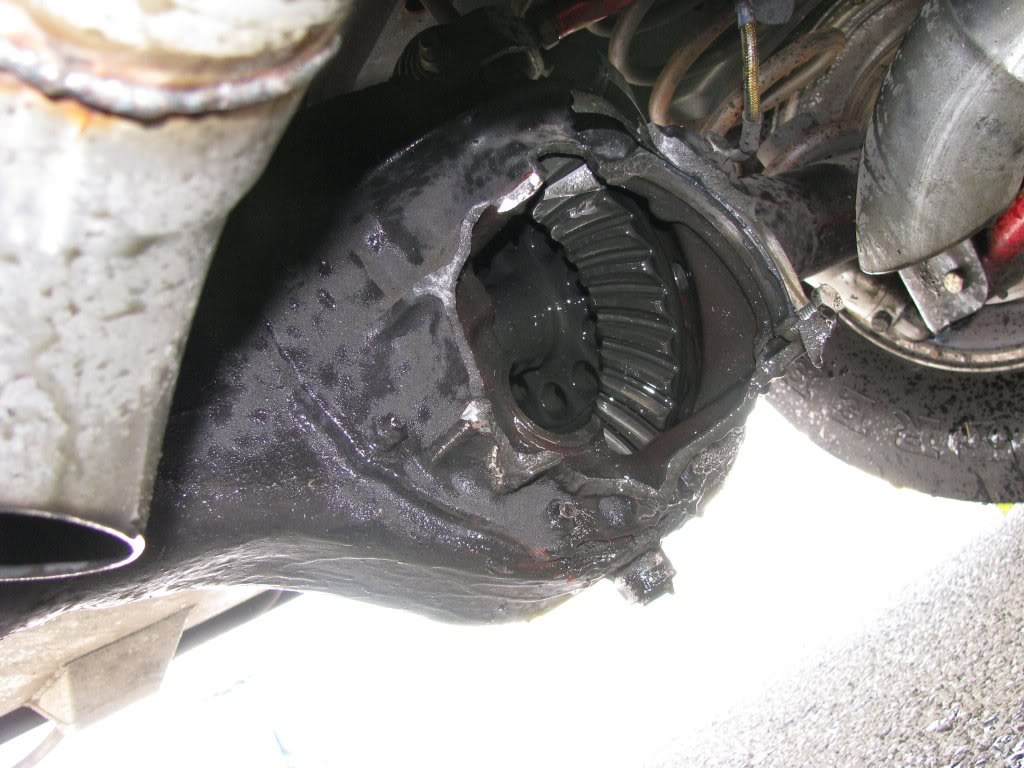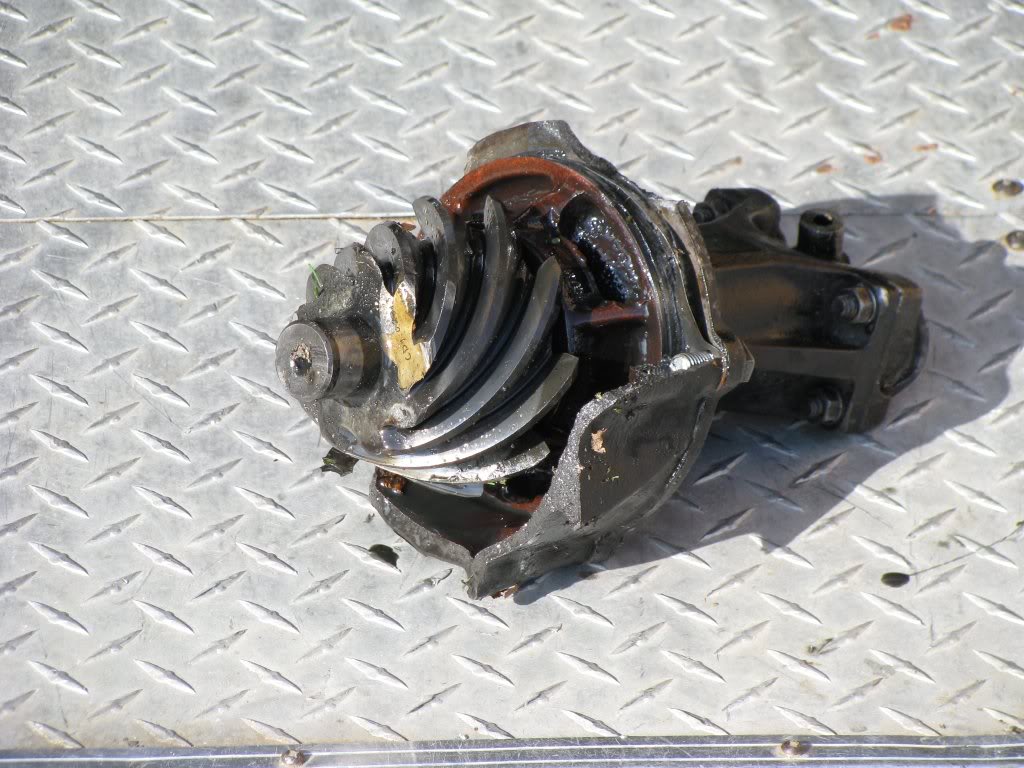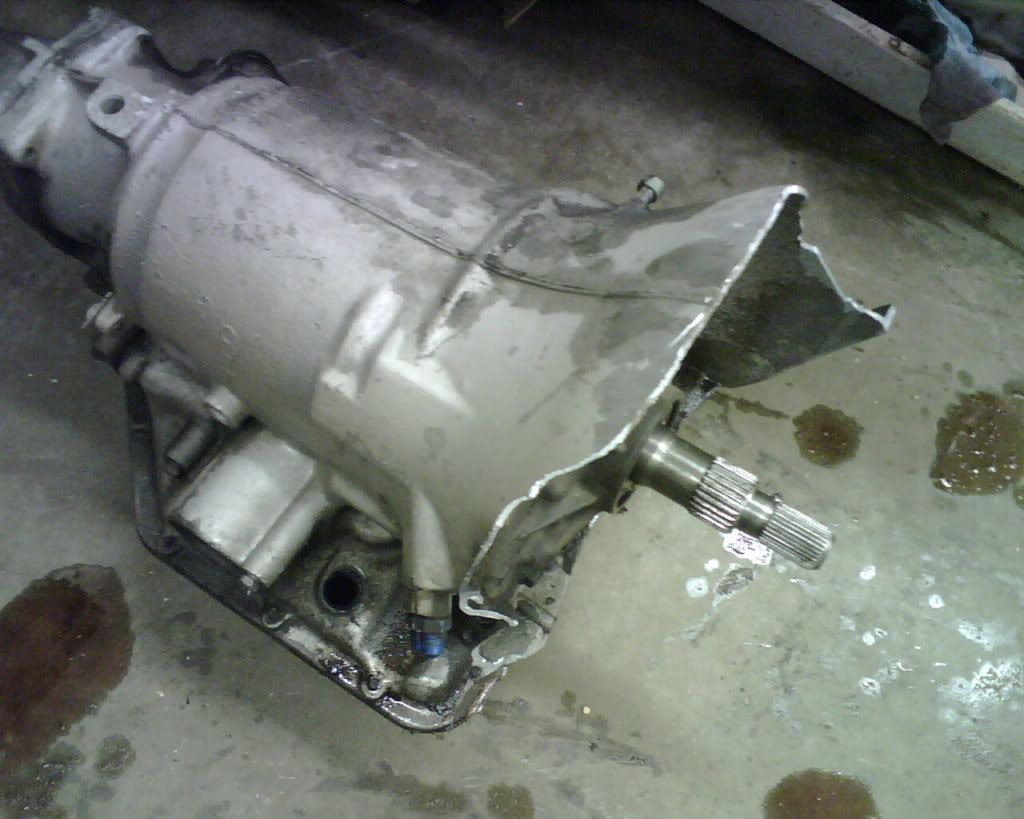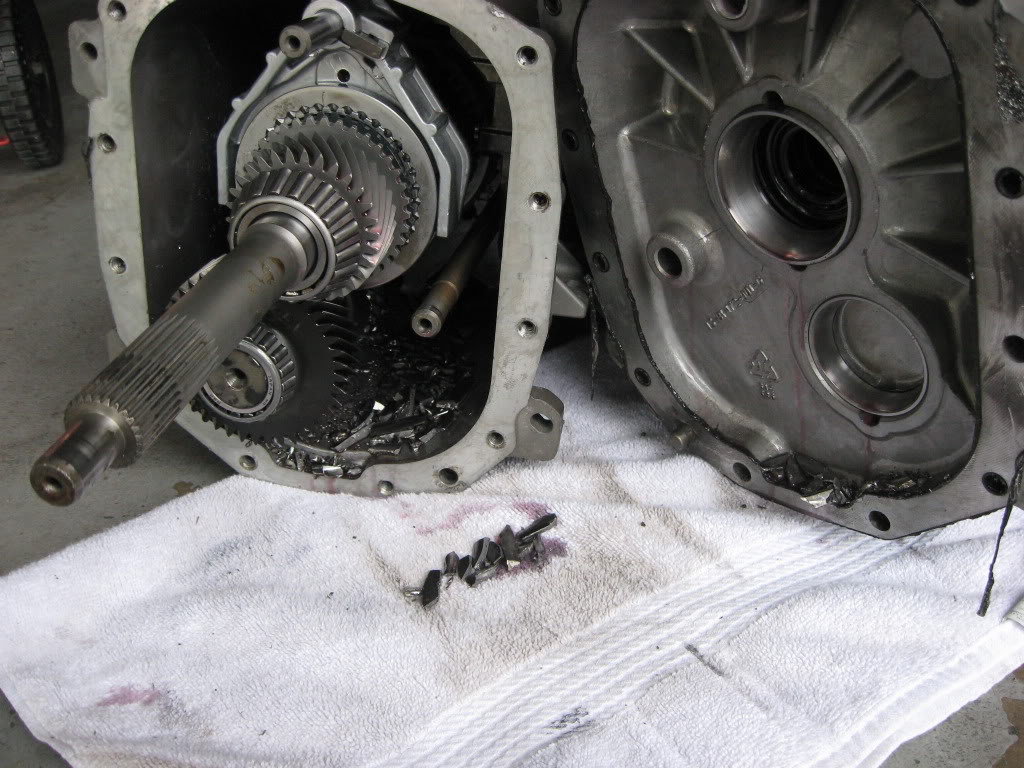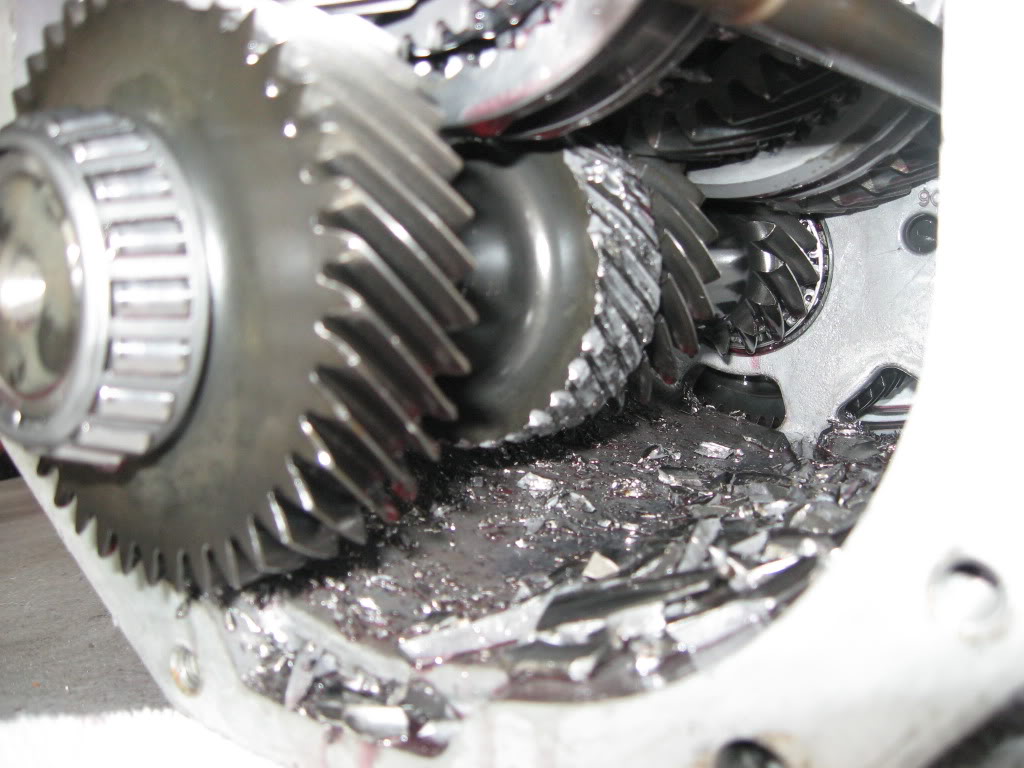heres my take,, if youve got a 10 bolt, DUMP IT ! for a decent rear axle!if you have intentions of exceeding about 450 hp.
I had a 1969 camaro with a 12 bolt rear at one time and a 1967 firebird with a 10 bolt rear.
once I started racing with slicks and got the hp up over about 450hp / 450ft lbs NEITHER REAR lasted too long,, (once I started installing STROKE BIG BLOCK CHEVYS IN THE CARS and using nitrous, the stock rear ,even with upgrades was a joke,)I rebuilt both rears with quality components (the 12 bolt several times) I installed a full roll cage and a serious caltrac rear suspension but neither rear lasted under the constant pounding, now I eventually replaced BOTH rears in BOTH cars with DANA 60 rears and never had another issue with the rear in either car, I would never suggest thats the only route but I don,t even bother warring about it in race cars, I just install a DANA 60,with billet , heat treated axles, and quality ring/pinion and bearings and IM done worrying about it, its just beating a dead horse to use a basically stock or slightly upgraded 10 bolt rear in a high hp car, even the 12 bolts a bad joke in my opinion.
ID bet the vast majority of guys never consider swapping or upgrading a rear differential, in their car until forced into it by problems with the seals,bearings,axles,gears etc. until the original rear either fails catastrophically or needs a gear ratio change.
example
after destroying a very expensive 12 bolt chevy rear with dozens of aftermarket components in my 1969 496 BBC engine muncie camaro, I found a 1970 hemi challenger wreck and purchased the rear differential, I added aftermarket gears,bearings and axles and ran the #%$%^ out of the car for years, when I sold the car I made a few bucks swapping a fellow racers 12 bolt rear back into the car so it would look a bit more stock, and he was still racing that dana rear in his 1969 camaro 30 years later(some maintenance obviously)but has gone thru dozens of engines and transmissions in 30 plus years.
when I trashed the original rear in my 1965 Pontiac tempest, I swapped to a STOCK HEMI road runner DANA 60 and never had problems
a properly set up dana 60 is almost bullet proof
viewtopic.php?f=44&t=678&p=8945&hilit=tempest#p8945
viewtopic.php?f=71&t=237&p=1630#p1630
http://www.4secondsflat.com/CalTracs.html
http://www.calvertracing.com/caltracs.html
http://www.calvertracing.com/caltracs-applications.php
http://www.calvertracing.com/caltracs.php
you have two fairly cheap options the LAKEWOOD STYLE traction bars or the CAL TRAC TYPE bars
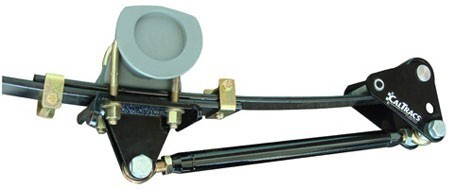
caltrack bars normally cost about $350 but you can fabricate decent cal trac bars if you have a welder
viewtopic.php?f=45&t=273&hilit=caltrac
viewtopic.php?f=71&t=216&p=7850&hilit=+cal+trac#p7850
http://www.hotrodsandhemis.com/Traction.html
my friend installed a used set of slapper bars he found on Craig's list for $50 , the results were a marked improvement but he still has traction issues if he forgets and just floors the throttle without thinking, hes learned that a slightly more gradual application of the gas petal allows the car to maintain traction now that the slapper bars are installed
READ THIS
http://www.competitionengineering.com/a ... assis2.asp

The bolt-on "Slapper Bar" is one of the most basic traction devices available. Originally pioneered by Bill "Grumpy" Jenkins in the mid-sixties, it gets its name from the way it works. One end of the Slapper Bar replaces the stock spring pad and is clamped to the rear axle housing. The front end of the bar is suspended just below the spring eye. When the housing begins to rotate during launch, the bar also rotates until it contacts or "slaps" the spring. (Unlike other brands, Competition Engineering Traction Bars make contact directly below the front spring eye, preventing spring damage). When contact occurs, the Slapper Bar becomes a lever trying to push the axle housing down and planting the tires in the process.
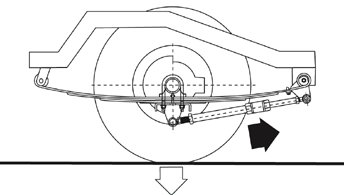
A revolutionary, patented, completely bolt-on traction device, the Slide-A-Link™, designed for both street and strip use is track tested and competition proven to outperform conventional “Slapper†bars. A solid mounted front plate is installed inside the original front spring pocket and clamps to the leaf spring to provide a positive displacement for the torque that is transmitted from the rear axle through the telescoping bar and special durometer shock pad. These forces, along with improved instant center geometry, provide better weight transfer for increased traction. Free travel and pre-load adjustments are made on the vehicle by adjusting the jack screw at the rear of the bar.
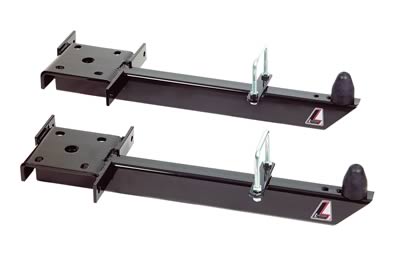
LAKEWOOD STYLE traction bars normally cost between $70-$120 there not quite as effective but they work reasonably well.
http://static.summitracing.com/global/i ... _21607.pdf
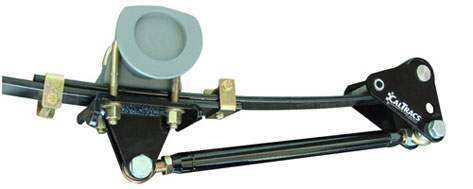
caltracs tend to work better than slapper bars on older leaf spring cars
http://store.summitracing.com/egnsearch ... toview=sku
once youve seen axles shear and seen the results the cost of a dana 60 looks like a bargain
typical results of 450hp, slicks and a 10 bolt rear differential
http://www.youtube.com/user/MrMustangMan357
video of what happeneds when a 10 or 12 bolt chevy rear fails at the track
I had a 1969 camaro with a 12 bolt rear at one time and a 1967 firebird with a 10 bolt rear.
once I started racing with slicks and got the hp up over about 450hp / 450ft lbs NEITHER REAR lasted too long,, (once I started installing STROKE BIG BLOCK CHEVYS IN THE CARS and using nitrous, the stock rear ,even with upgrades was a joke,)I rebuilt both rears with quality components (the 12 bolt several times) I installed a full roll cage and a serious caltrac rear suspension but neither rear lasted under the constant pounding, now I eventually replaced BOTH rears in BOTH cars with DANA 60 rears and never had another issue with the rear in either car, I would never suggest thats the only route but I don,t even bother warring about it in race cars, I just install a DANA 60,with billet , heat treated axles, and quality ring/pinion and bearings and IM done worrying about it, its just beating a dead horse to use a basically stock or slightly upgraded 10 bolt rear in a high hp car, even the 12 bolts a bad joke in my opinion.
ID bet the vast majority of guys never consider swapping or upgrading a rear differential, in their car until forced into it by problems with the seals,bearings,axles,gears etc. until the original rear either fails catastrophically or needs a gear ratio change.
example
after destroying a very expensive 12 bolt chevy rear with dozens of aftermarket components in my 1969 496 BBC engine muncie camaro, I found a 1970 hemi challenger wreck and purchased the rear differential, I added aftermarket gears,bearings and axles and ran the #%$%^ out of the car for years, when I sold the car I made a few bucks swapping a fellow racers 12 bolt rear back into the car so it would look a bit more stock, and he was still racing that dana rear in his 1969 camaro 30 years later(some maintenance obviously)but has gone thru dozens of engines and transmissions in 30 plus years.
when I trashed the original rear in my 1965 Pontiac tempest, I swapped to a STOCK HEMI road runner DANA 60 and never had problems
a properly set up dana 60 is almost bullet proof
viewtopic.php?f=44&t=678&p=8945&hilit=tempest#p8945
viewtopic.php?f=71&t=237&p=1630#p1630
http://www.4secondsflat.com/CalTracs.html
http://www.calvertracing.com/caltracs.html
http://www.calvertracing.com/caltracs-applications.php
http://www.calvertracing.com/caltracs.php
you have two fairly cheap options the LAKEWOOD STYLE traction bars or the CAL TRAC TYPE bars
caltrack bars normally cost about $350 but you can fabricate decent cal trac bars if you have a welder
viewtopic.php?f=45&t=273&hilit=caltrac
viewtopic.php?f=71&t=216&p=7850&hilit=+cal+trac#p7850
http://www.hotrodsandhemis.com/Traction.html
my friend installed a used set of slapper bars he found on Craig's list for $50 , the results were a marked improvement but he still has traction issues if he forgets and just floors the throttle without thinking, hes learned that a slightly more gradual application of the gas petal allows the car to maintain traction now that the slapper bars are installed
READ THIS
http://www.competitionengineering.com/a ... assis2.asp

The bolt-on "Slapper Bar" is one of the most basic traction devices available. Originally pioneered by Bill "Grumpy" Jenkins in the mid-sixties, it gets its name from the way it works. One end of the Slapper Bar replaces the stock spring pad and is clamped to the rear axle housing. The front end of the bar is suspended just below the spring eye. When the housing begins to rotate during launch, the bar also rotates until it contacts or "slaps" the spring. (Unlike other brands, Competition Engineering Traction Bars make contact directly below the front spring eye, preventing spring damage). When contact occurs, the Slapper Bar becomes a lever trying to push the axle housing down and planting the tires in the process.

A revolutionary, patented, completely bolt-on traction device, the Slide-A-Link™, designed for both street and strip use is track tested and competition proven to outperform conventional “Slapper†bars. A solid mounted front plate is installed inside the original front spring pocket and clamps to the leaf spring to provide a positive displacement for the torque that is transmitted from the rear axle through the telescoping bar and special durometer shock pad. These forces, along with improved instant center geometry, provide better weight transfer for increased traction. Free travel and pre-load adjustments are made on the vehicle by adjusting the jack screw at the rear of the bar.

LAKEWOOD STYLE traction bars normally cost between $70-$120 there not quite as effective but they work reasonably well.
http://static.summitracing.com/global/i ... _21607.pdf

caltracs tend to work better than slapper bars on older leaf spring cars
http://store.summitracing.com/egnsearch ... toview=sku
once youve seen axles shear and seen the results the cost of a dana 60 looks like a bargain
typical results of 450hp, slicks and a 10 bolt rear differential
http://www.youtube.com/user/MrMustangMan357
video of what happeneds when a 10 or 12 bolt chevy rear fails at the track

